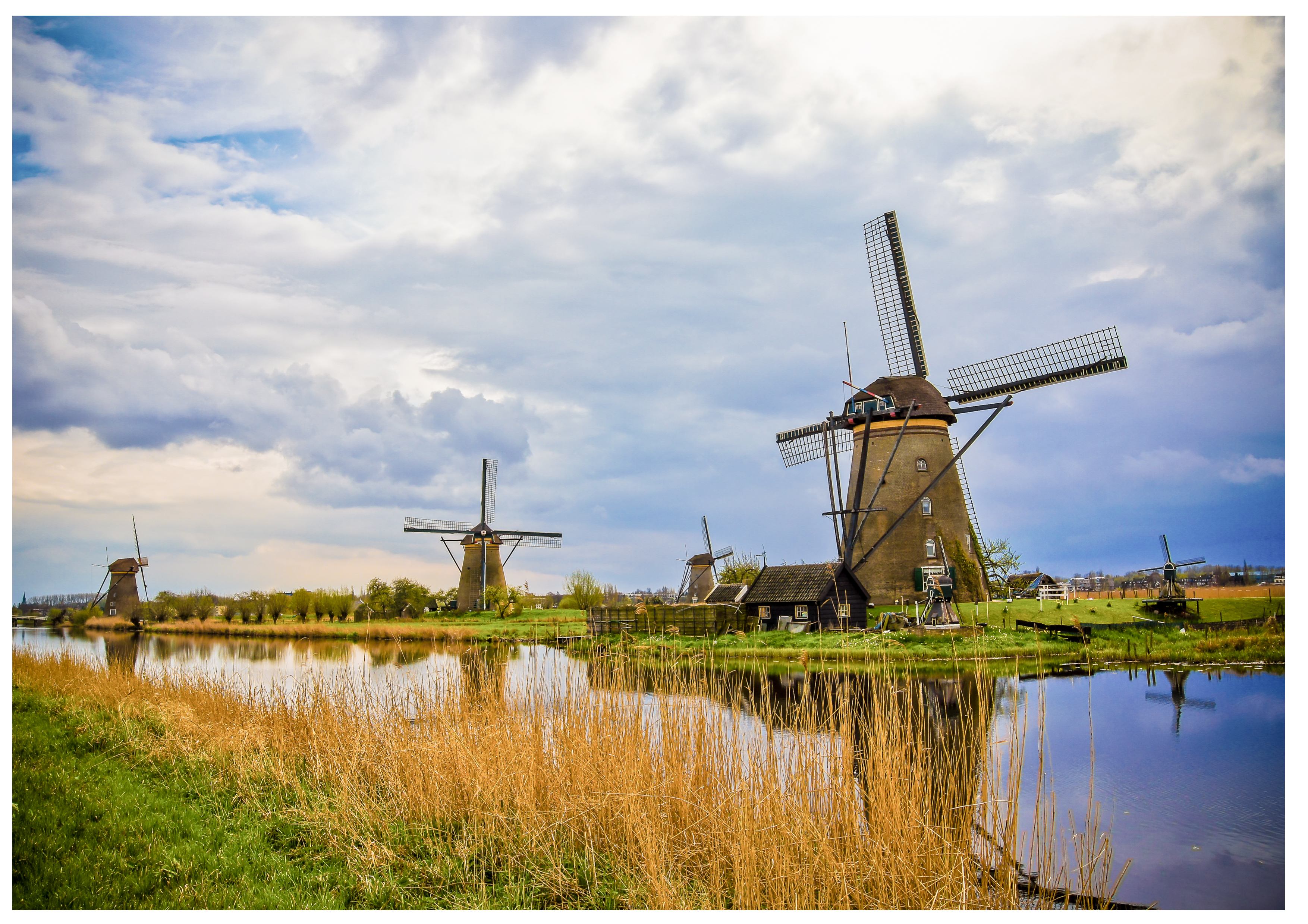You can’t understand the history of Holland without knowing the 19 windmills of Kinderdijk who were constructed around 1740 as part of a larger water management system which prevented floods. In fact, an important part of Holland is situated up to approximately 7 meters below sea level. The Dutch people don’t notice or feel it because an incredibly innovative and complex system keeps the ever-rising seawater from flooding the land.
The Kinderdijk mills are settled in the region of Alblasserwaard which historically has always had water problems, especially in the 13th century. In fact, large canals called in dutch “weteringen” were dug to get rid of the excess water in the polders. The drained soil continued to subside while the level of the river was rising due to the river’s sand deposits.
After few centuries, Holland had to develop new innovative solutions to keep the polders dry. So, it was decided to build “a series of windmills with a limited capacity to bridge water level differences but just able to pump water into a reservoir at an intermediate level between the soil in the polder and the river; the reservoir could be pumped out into the river by other windmills whenever the river level was low enough and the river level has both seasonal and tidal variations”.
Currently, some of the windmills are still being used during spring and summer time. The main water works are provided by two diesel pumping stations near one of the entrances of the windmills site.
Since 1997, the Mills of Kinderdijk have been recognized by the UNESCO as world heritage. Nowadays, the mills of Kinderdijk represent a strong symbol of Dutch water management and History because water and History have always being strongly connected in Holland.
Currently, there are other more sophisticated tools that help to prevent flooding. For example, Giswater, allows anticipate extreme weather and predicts future scenarios to minimize the impact of floodings.

